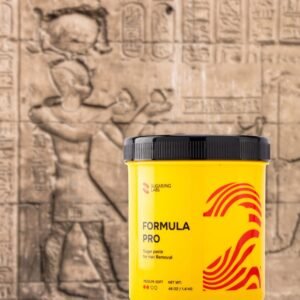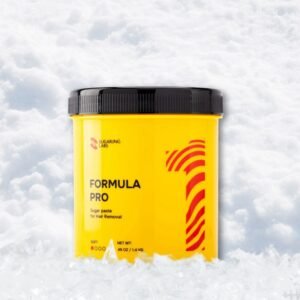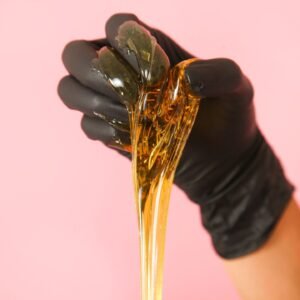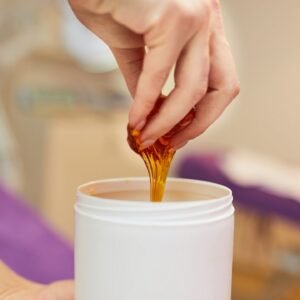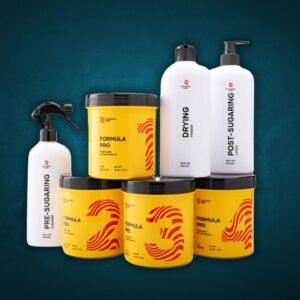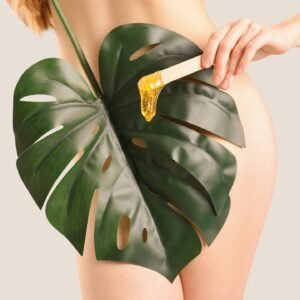Can Sugaring Cause Yeast Infections? Myths and Facts Explained

Sugaring is a natural hair removal technique that uses a paste made from sugar, lemon juice, and water to remove hair from the root. While it’s known for being gentle on the skin, some people wonder: can sugaring cause yeast infections? This article explores the potential connection and how to prevent infections.
Table of Contents
- Understanding Yeast Infections
- Can Sugaring Lead to Yeast Infections?
- Risk Factors to Consider
- Preventing Infections After Sugaring
- Frequently Asked Questions
- Can sugaring directly cause a yeast infection?
- How can I prevent infections after sugaring?
- Is sugaring safe for sensitive skin?
- What should I do if I experience irritation after sugaring?
- Can I do sugaring while taking antibiotics?
Understanding Yeast Infections
Yeast infections happen when Candida, a fungus naturally present in the body, grows excessively. These infections commonly occur in warm, moist areas such as the vaginal region, underarms, and bikini line. Factors that contribute to their development include prolonged moisture exposure, weakened immunity, hormonal changes, antibiotic use, and tight clothing. Symptoms often include itching, redness, swelling, and, in vaginal infections, a thick white discharge.
Candida thrives in damp environments with limited airflow. Lifestyle factors—such as high sugar intake, stress, or using products that disrupt the skin’s natural barrier—can increase the risk of infection. While yeast infections are common, proper hygiene and skin care can help prevent them.
Can Sugaring Lead to Yeast Infections?
Sugaring itself does not directly cause yeast infections, but certain factors related to the process might contribute to their development.
Moisture, Skin Irritation, and Bacteria
Moisture Retention: Sugaring removes hair from areas prone to sweating. If the skin stays damp for too long, it can create an ideal environment for Candida to grow.
Skin Sensitivity: Sugaring is gentler than waxing but can still cause temporary redness and irritation. This may weaken the skin’s barrier, increasing infection risk.
Hygiene Concerns: If sanitation is poor or aftercare is neglected, bacteria can enter the freshly sugared area, potentially leading to infections, including yeast infections.
People with sensitive skin may experience irritation more easily. When the skin barrier is compromised, fungi and bacteria can multiply, making aftercare especially important.
Risk Factors to Consider
Sensitive Skin and Pre-Existing Conditions
Those who frequently experience yeast infections or have very reactive skin may be more prone to irritation after sugaring. Extra precautions can help reduce infection risk.
Poor Aftercare and Hygiene Practices
Neglecting aftercare—such as failing to keep the area clean, allowing excessive sweating, or wearing tight clothing—can increase the likelihood of infection. Wearing loose, breathable fabrics and keeping the skin dry supports healing and minimizes irritation.
Preventing Infections After Sugaring
To reduce infection risks, it’s important to follow proper pre- and post-care routines.
Pre- and Post-Care Routines
- Before Sugaring: Clean and dry the skin thoroughly. Avoid lotions or oils that could interfere with the sugar paste.
- After Sugaring: Keep the area dry, avoid excessive sweating for 24 hours, and wear loose clothing.
- Use Gentle Skincare: Avoid fragranced or harsh chemical-based products, as they can disrupt the skin’s natural balance.
- Support Skin Health: Eating probiotic-rich foods like yogurt or taking supplements can help maintain a healthy bacterial balance and prevent Candida overgrowth.
- Be Cautious with Antibiotics: Antibiotics can kill beneficial bacteria, increasing yeast infection risk.
Applying a soothing, antibacterial spray after sugaring can help reduce irritation. Natural remedies like aloe vera or chamomile can also aid skin recovery.Еry our care products for sugaring:
Choosing a Professional and Maintaining Hygiene
- Ensure your sugaring technician follows strict hygiene standards.
- For at-home sugaring, always use clean tools and avoid reusing applicators.
- Apply a fragrance-free moisturizer afterward to soothe the skin and prevent irritation.
Choosing a professional with strong sanitation practices ensures a safer sugaring experience. If sugaring at home, proper hygiene—such as washing hands, disinfecting tools, and storing the sugar paste correctly—is essential to prevent contamination.
So, can sugaring cause yeast infections? While sugaring itself does not directly cause them, factors like moisture retention, skin irritation, and poor aftercare can increase the risk. By maintaining proper hygiene and following aftercare routines, you can help prevent infections while enjoying the benefits of sugaring.
Taking care of your skin, keeping the area clean, and using the right skincare products can minimize risks. Sugaring remains a popular hair removal method, but like any beauty treatment, it requires proper aftercare to maintain skin health and prevent irritation.
Frequently Asked Questions
Can sugaring directly cause a yeast infection?
No, sugaring itself does not cause yeast infections. However, factors like moisture retention, skin irritation, and poor hygiene after sugaring may increase the risk.
How can I prevent infections after sugaring?
Keep the area clean and dry, wear loose clothing, avoid excessive sweating for 24 hours, and use fragrance-free skincare products to support skin health.
Is sugaring safe for sensitive skin?
Yes, sugaring is generally gentler than waxing, but those with sensitive skin should take extra precautions, such as applying soothing products and avoiding tight clothing.
What should I do if I experience irritation after sugaring?
Apply a natural soothing agent like aloe vera or chamomile, keep the area dry, and avoid harsh skincare products. If irritation persists, consult a dermatologist.
Can I do sugaring while taking antibiotics?
Yes, but antibiotics can disrupt the skin’s natural balance, increasing the risk of yeast infections. Consider probiotics and extra skin care to maintain a healthy bacterial balance.


